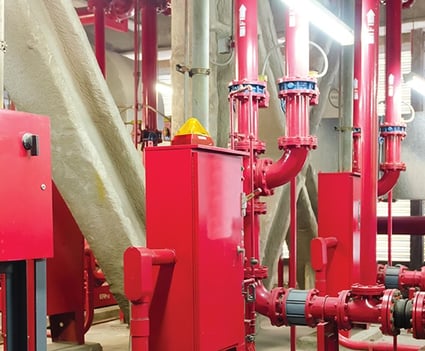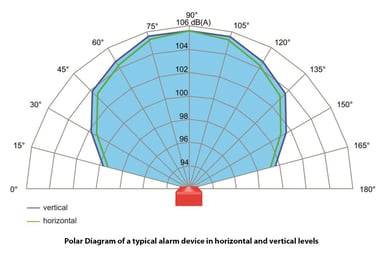
In particular, the horizontal and vertical angle radiation characteristics of the signaling devices must be checked and defined for each individual tone allowing the total volume of area to be correctly alerted. This is an essential part of the approval which must be considered during the planning phase, as the number and location of devices is critical to meet approval.
Planning of audible signaling devices
Planning an audible alarm must be a complete process and further technical characteristics must now be considered:
- The sound-pressure level [SPL] and the loudness (dB) of an audible alarm device is not identical for every tone. For planning requirements the SPL of the tone to be used on site always has to be taken as the basis for the plan. Never the loudest one available from the device.
- The audible alarm device achieves varying dB depending on the radiation angle from the device. The maximum dB is at a 90° angle (head on) in most cases. The level is significantly reduced at the sides (0° / 180°) (see fig. 1: Polar diagram)

Specifically in the planning phase the respective signaling range of industrial sounders must be determined. This results from the existing ambient sound level, or background noise, at the project site in connection with the radiation characteristics. The technology used to create the sound also has to be checked and taken into account.
Pfannenberg visual and audible signaling devices
Pfannenberg PYRA and PATROL series of industrial flashing sounders are the perfect option to comply with the highest European standards.
Our experts assist our European customers to plan and design their signaling ranges with viable certified data and take into account their specific project conditions to determine and install the exact number of audible alarm devices required.
Click here to learn more about our Signaling Solutions!







